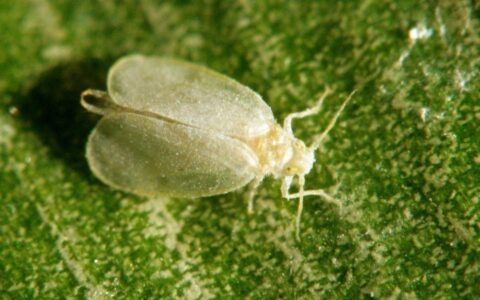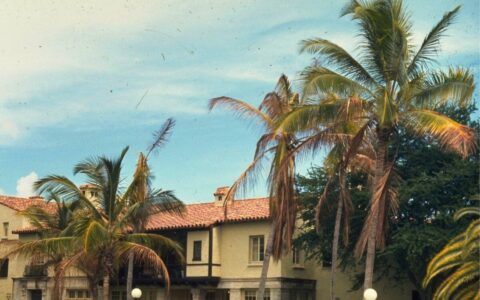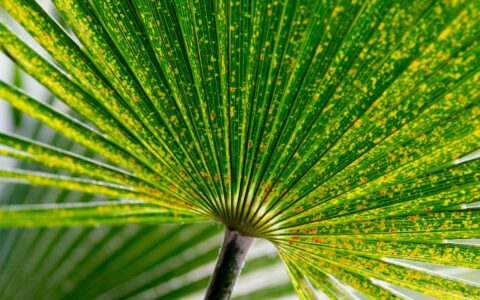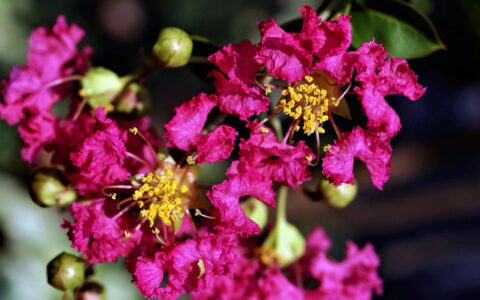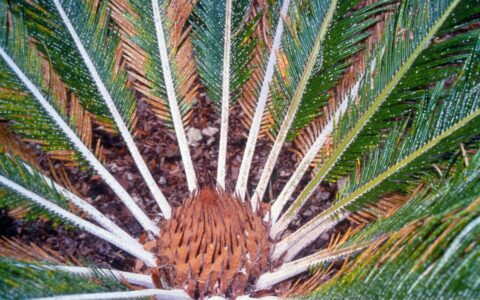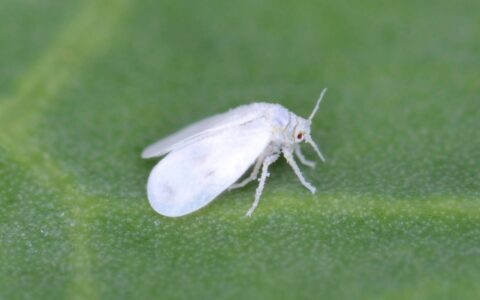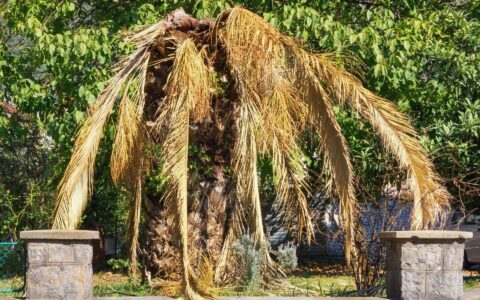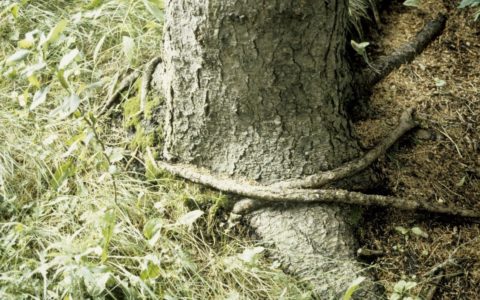As a South Florida homeowner, protecting your trees from common tree diseases is no easy feat. The region’s warm, humid climate creates the perfect breeding ground for a variety of tree diseases that can wreak havoc on your landscape. From unsightly fungal infestations to deadly bacterial infections, it seems that most South Florida trees are prone to infection by one sort or disease or another.
In this comprehensive guide, we’ll explore some of the most common tree diseases found in South Florida, their telltale symptoms, and what you can do to protect your trees. So buckle up, grab a notepad, and let’s dive into the world of tree health in the Sunshine State.
Key Takeaways:
- Early detection and treatment are vital for controlling tree diseases
- Different diseases target the foliage, stem, and roots of trees
- Common diseases include citrus greening, lethal bronzing, root rots, laurel wilt, fusiform rust, and powdery mildew
- Symptoms range from discolored leaves to galls, wilting, and branch dieback
- Proper cultural practices, pruning, and chemical treatments can help manage tree diseases
- Professional arborists can diagnose issues and develop treatment plans to protect your trees and keep them healthy year-round
The Importance of Early Tree Disease Detection and Treatment
Before we get into the nitty-gritty details of specific diseases, it’s essential to understand why early detection and prompt treatment are so vital. Many tree diseases can spread rapidly, and by the time visible symptoms appear, the infection may have already taken a significant toll on the tree’s health.
Identifying and addressing issues early on can mean the difference between saving your tree and having to remove it entirely. Regular inspections and seeking professional help at the first sign of trouble can go a long way in preserving the beauty and value of your property.
Understanding Tree Disease Targets: Foliage, Stem, and Roots
Tree diseases can affect different parts of the tree, including the foliage, stem, and roots. Let’s take a quick look at each category:
- Foliage Diseases: These diseases target the leaves, causing discoloration, wilting, stunting, or premature dropping. Examples include leaf spot diseases, anthracnoses, blights, and powdery mildews.
- Stem Diseases: Stem diseases can cause galls (tumor-like growths), cankers (infected areas on the bark), decays (rotting of the wood), and vascular wilts (obstructed water and nutrient transport throughout the tree).
- Root Diseases: Root diseases range from feeder root necrosis to root rots and vascular occlusions, ultimately interfering with the tree’s ability to absorb water and nutrients, compromising growth and stability.
Now that you understand the basics, let’s dive into some of the most common tree diseases found in South Florida and how to identify, manage, and prevent their spread.
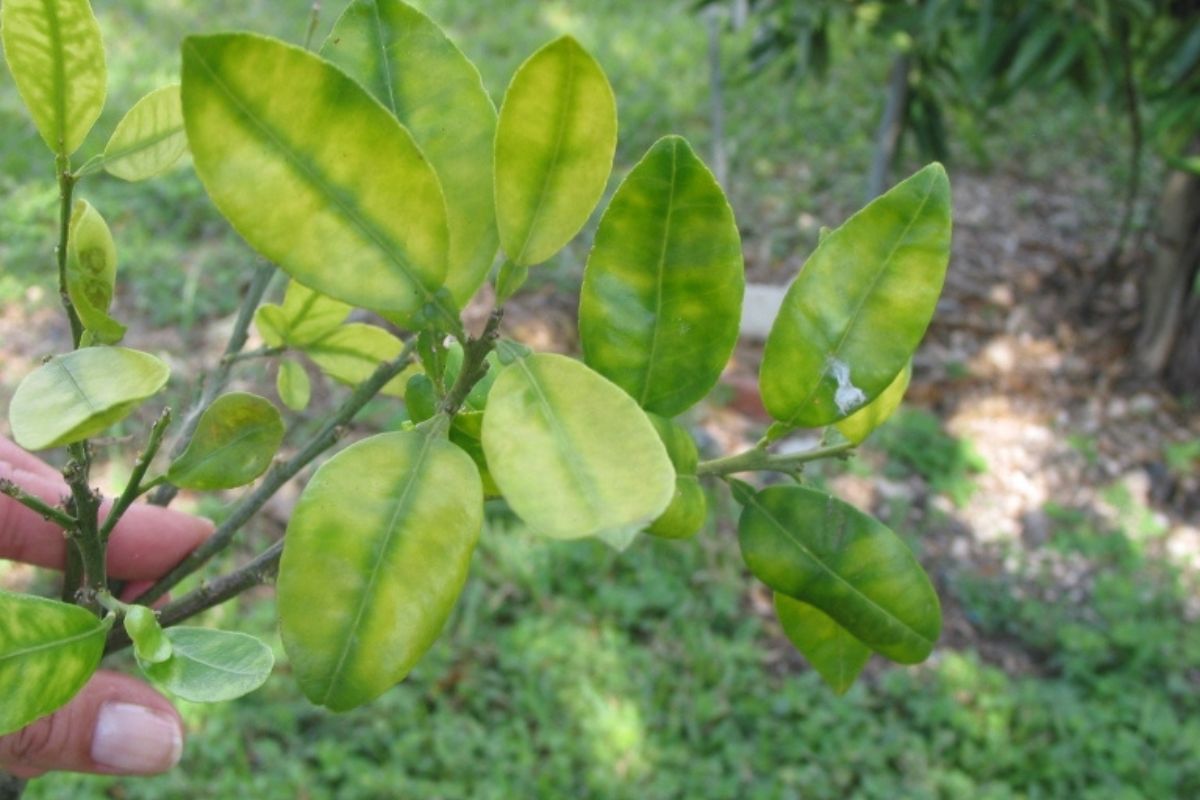
A close-up look of citrus greening by Jeffrey W. Lotz, Florida Department of Agriculture and Consumer Services, Bugwood.org
Citrus Greening (Huanglongbing)
Citrus greening, also known as Huanglongbing (HLB), is a devastating bacterial disease that has wreaked havoc on the Florida citrus industry for decades. Caused by the bacterium Candidatus Liberibacter asiaticus and transmitted by the Asian citrus psyllid, this disease affects all citrus cultivars, causing tree decline and eventual death.
Symptoms and Damage
- Blotchy, mottled yellowing of leaves (the telltale “greening” symptom)
- Lopsided, discolored, or undersized fruit
- Yellow shoots with upright, narrow leaves
- Sparse foliage and thin canopy
- Decreased crop yields and eventual tree death
Environmental Conditions
This bacterial disease is spread by the Asian citrus psyllid insect, which thrives in warm, humid climates. The disease can spread rapidly during periods when new growth emerges on citrus trees.
Citrus greening symptoms can be observed year-round in South Florida but are most visible from September through March.
Managing Citrus Greening
While there is no cure, early detection and removal of infected trees can help prevent further spread. Avoid moving infected trees to new areas, as this can introduce the disease. Controlling the psyllid population through insecticides and removing diseased trees are critical to minimizing the risk of exposure for nearby citrus trees.
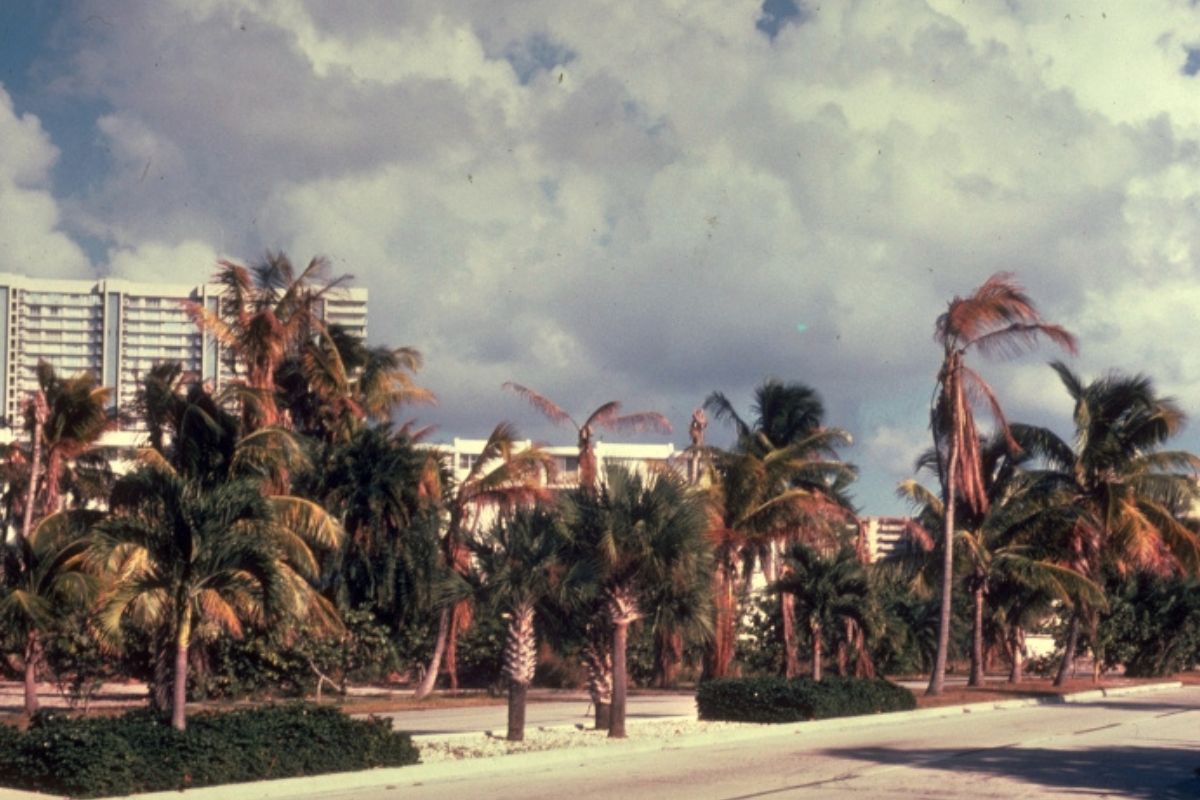
Palm trees with palm lethal bronzing (photo by USDA Forest Service – Region 8 – Southern , USDA Forest Service, Bugwood.org)
Lethal Bronzing in Palms
From Miami to Jupiter, a deadly disease known as lethal bronzing (LBD) has been threatening Florida’s palm population since 2006. Caused by phytoplasma (a unique type of bacteria), this untreatable and fatal disease spreads through piercing-sucking insects, primarily the palm cixiid.
Symptoms and Damage
- Early fruit drop or flower blackening
- Bronze-like browning of leaves, starting from the oldest and progressing upward
- Rapid decline, with the spear leaf (topmost leaf) turning brown, signaling the death of the palm’s heart
- Complete death of the palm within 2-3 months of visible symptoms
Environmental Conditions
Hot, humid conditions allow the insect vectors to thrive but lethal bronzing can infect palms year-round in South Florida’s tropical climate.
Managing Lethal Bronzing
If you suspect your palm is infected, contact your county Extension office immediately for testing. Prompt removal of infected palms is crucial to preventing spread. Neighboring palms can be treated with preventative antibiotic injections (oxytetracycline HCl) to protect them from infection.
For more details, see our article about Lethal Bronzing Disease in Palms
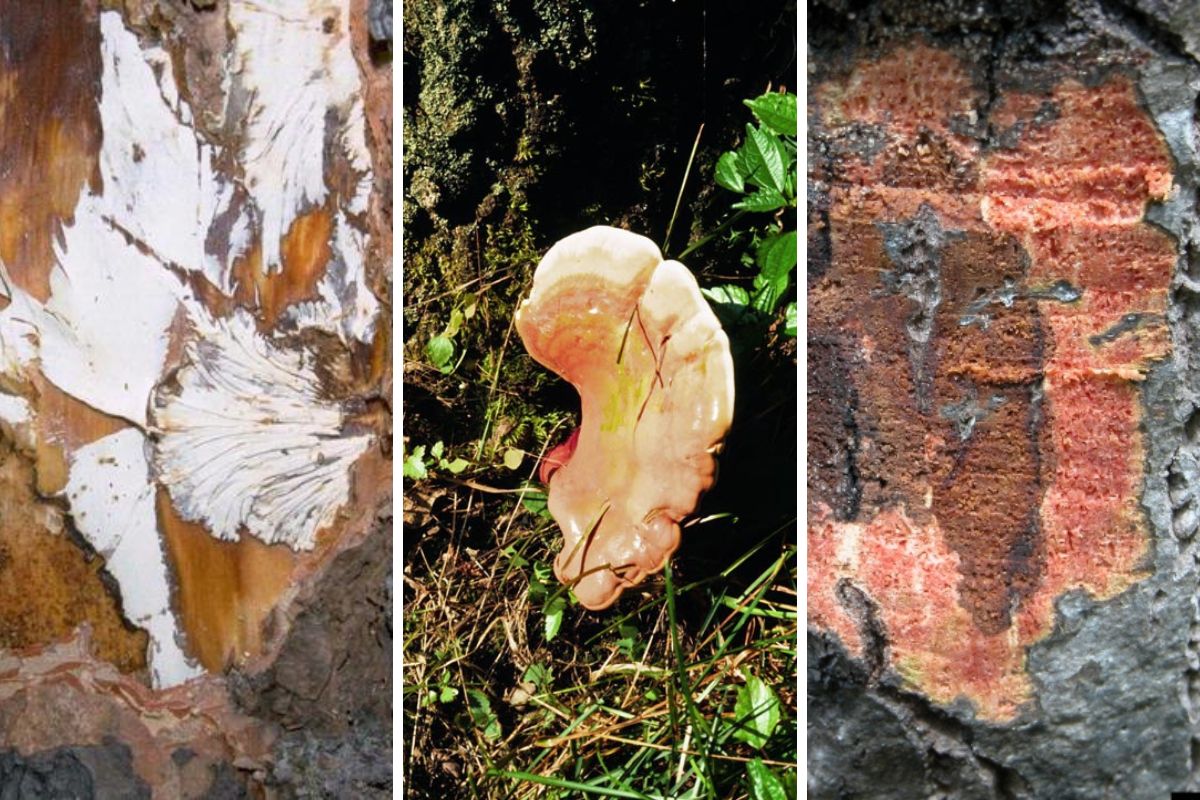
From left to right: Mycelial fans of armillaria under the bark of a tree by William Jacobi, Colorado State University, Bugwood.org; Ganoderma root rot by Manfred Mielke, USDA Forest Service, Bugwood.org; Phytophthora root rots, photo by Joseph OBrien, USDA Forest Service, Bugwood.org
Armillaria, Ganoderma, and Phytophthora Root Rots
These fungal root rots are naturally occurring in Florida soils and can infect a wide range of trees and shrubs, causing wilting, foliage thinning, and overall decline. While Armillaria and Ganoderma often enter through root damage or environmental stresses, Phytophthora thrives in excessive moisture and can quickly kill trees by infecting the vascular system.
Symptoms and Damage
- Wilting, dry, or shriveled leaves
- Mushroom-like fruiting bodies (conks) on the trunk or near the base of the tree
- Browning leaves and trunk bleeding (Phytophthora)
- Progressive dieback and crown thinning
- Compromised water and nutrient uptake, leading to tree death
Environmental Conditions
Armillaria and Ganoderma tend to infect stressed trees through root injuries or contact with infected roots/stumps. Armillaria produces mushroom fruiting bodies when soil moisture is high, while Ganoderma is most active in warm, humid conditions. Phytophthora thrives in excessively wet, soggy soil conditions with poor drainage. High moisture allows pathogen to spread rapidly.
Active Months
In South Florida, armillaria root rot mushrooms typically emerge in fall and winter when rainfall increases. There’s no particular active season for ganoderma as this pathogen persists year-round in subtropical South Florida. Phytophthora root rot can be active year-round but is especially problematic during the rainy summer months.
Blockquote See our related articles about how to help trees recover from flooding and proper watering practices to prevent waterlogged soil that can encourage the development of root rot.
Managing Root Rots
Unfortunately, there are no cures for these root rots once established, and infected trees often need to be removed to prevent further spread. Proper site drainage, avoiding root damage during construction, and choosing resistant plant species are crucial preventative measures. Maintaining tree health through proper care can also increase their defense against root rot fungi.
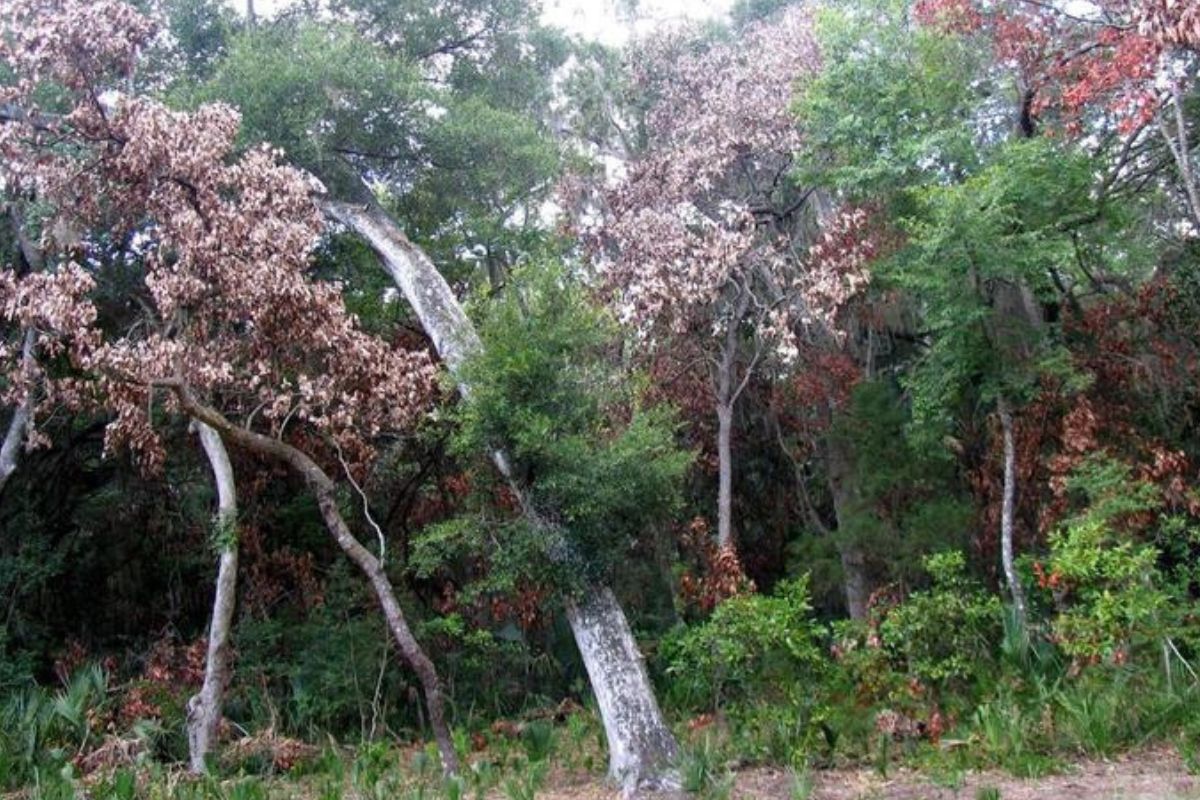
Trees killed by Laurel wilt by Albert (Bud) Mayfield, USDA Forest Service, Bugwood.org
Laurel Wilt
Caused by the fungus Raffaelea lauricola and spread by the invasive redbay ambrosia beetle, laurel wilt is a deadly disease affecting trees in the laurel family, including avocado, redbay, and camphor trees.
Symptoms and Damage
- Wilting and browning leaves
- Blue-black streaks under the bark
- Tiny holes filled with sawdust-like material
- Rapid decline and death of the tree
Environmental Conditions
Transmission of laurel wilt is greater in summer. It’s spread by the invasive redbay ambrosia beetle, which is able to travel longer distances in warmer weather. The fungal pathogen also develops faster in heat.
While active all year in South Florida’s warmth, laurel wilt may spread faster during the hottest summer months.
Managing Laurel Wilt
Infected trees must be removed and destroyed to prevent further spread, as there is no cure. Early detection is essential, so regularly inspect laurel trees for symptoms. Avoid moving firewood or wood debris from infected areas, as this can introduce the disease to new locations.
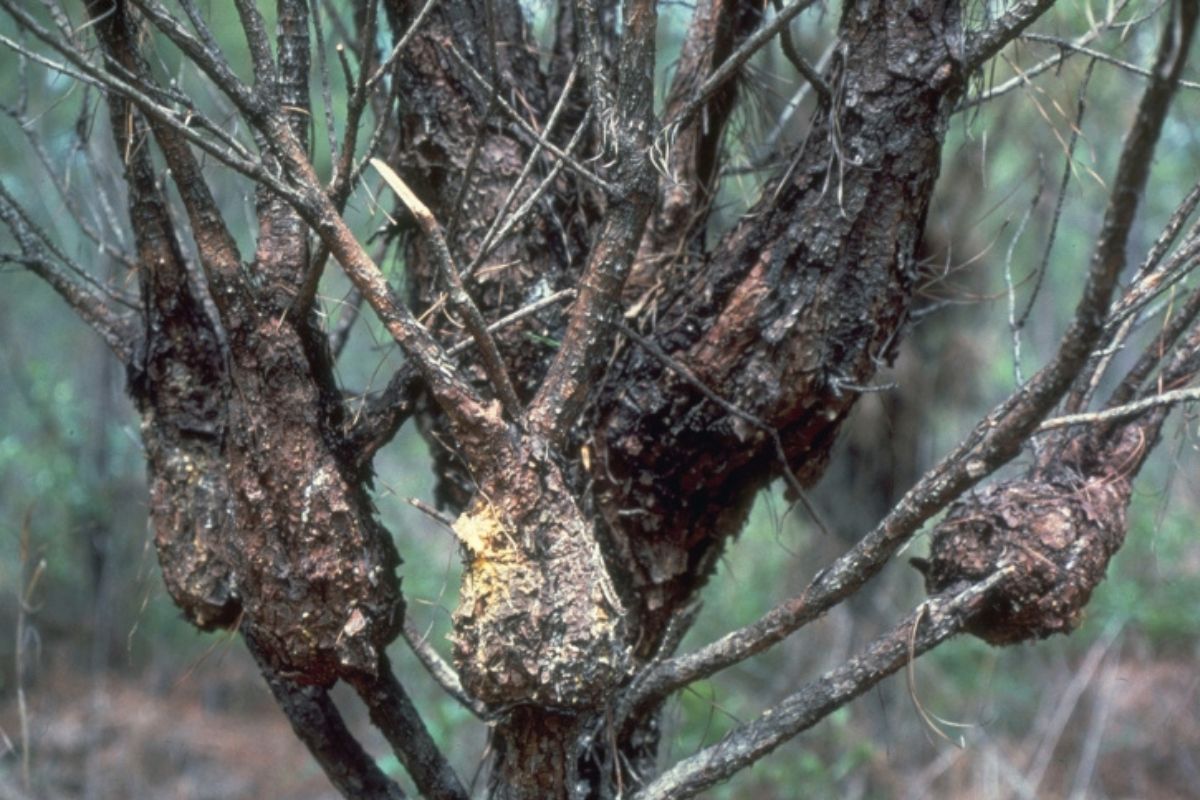
Fusiform rust in branches of the trees by USDA Forest Service – Region 8 – Southern , USDA Forest Service, Bugwood.org
Fusiform Rust
Primarily affecting slash and loblolly pines in the southern United States, fusiform rust is a stem disease caused by the fungus Cronartium quercuum. It creates cigar-shaped galls on the main stem, increasing the risk of stem breakage and compromising the tree’s structural integrity.
Symptoms and Damage
- Cigar-shaped galls on the main stem
- Yellow-orange blisters on the galls
- Rust-colored spores
- Increased risk of stem breakage and tree failure
Environmental Conditions
This fungal disease requires an alternate host plant to complete its lifecycle. It spreads spores most readily in moist conditions, leading to increased spread and visible symptoms during rainy periods.
Managing Fusiform Rust
Infected trees often require removal to prevent further spread and potential hazards from stem breakage. Proper pruning and destruction of infected branches can help control the disease’s spread in less severe cases.
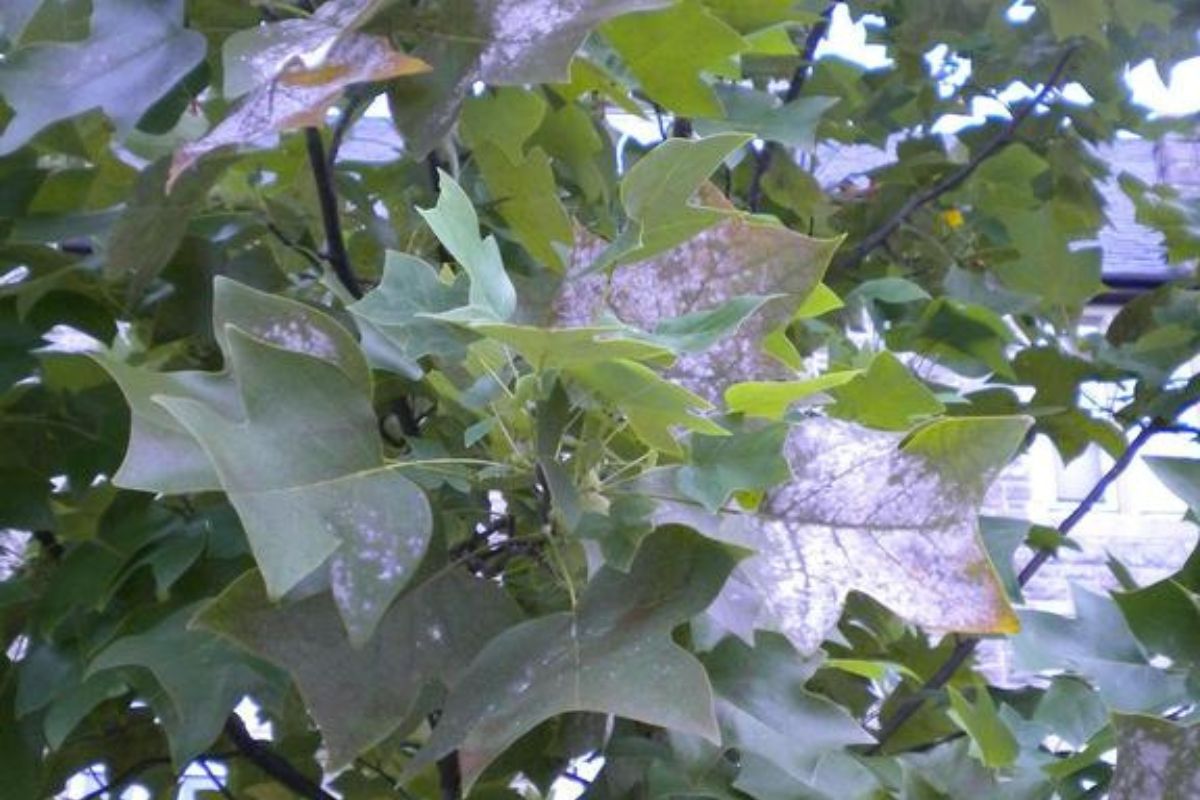
Powdery mildew on leaves by Elizabeth Bush, Virginia Polytechnic Institute and State University, Bugwood.org
Powdery Mildew
While not necessarily deadly, powdery mildew is a widespread fungal disease that can stunt growth, discolor foliage, and make trees look unsightly. It thrives in warm, humid climates like South Florida and affects a wide range of plants, from shade trees to crape myrtles.
Symptoms and Damage
- White or gray powdery substance on leaves
- Distorted or stunted leaves, buds, and fruit
- Premature leaf drop
- Reduced photosynthesis and plant vigor
Environmental Conditions
Powdery mildew favors warm, humid conditions and crowded plantings with poor air circulation. It can spread quickly in shady areas and on plants exposed to frequent overhead watering. Symptoms are more prevalent during spring and fall in South Florida when humidity is high and temperatures are moderate.
Managing Powdery Mildew
Managing powdery mildew involves pruning infected areas to improve air circulation, applying fungicides or natural remedies like a milk-water solution, and choosing resistant plant varieties. Maintaining proper plant spacing and avoiding overhead watering can also help prevent infestations.
FAQs About Tree Diseases in South Florida
Q. What are the best preventive measures for common tree diseases in South Florida?
A. To prevent common tree diseases in South Florida, regularly inspect your trees for signs of distress. Use proper sanitation methods, apply appropriate fungicides, and ensure proper watering and fertilization practices are in place.
Q. How does the South Florida climate contribute to the spread of these diseases?
A. South Florida’s warm, humid climate is a breeding ground for fungi and pests that can spread tree diseases. The frequent rain and high humidity can cause diseases to thrive and infect vulnerable trees.
Q. Are there any specific tree species that are more resistant to these common diseases?
A. Live oaks and bald cypress trees tend to be more resistant to common diseases in South Florida. They’re often healthier and more resilient, even in the face of these common threats.
Q. What impact do these diseases have on the local ecosystem and wildlife?
A. These common tree diseases can greatly disrupt the ecosystem and wildlife. For example, trees that are killed by disease will result in fewer habitats and food sources for animals. This imbalance can lead to declines in local wildlife populations.
Q. How often should trees be inspected for signs of these common diseases?
A. To keep your trees healthy, check them for disease signs every season. A quarterly inspection helps to catch early signs of trouble, preserving your trees and the ecosystem they inhabit.
Protect Your Trees with a Disease Treatment Plan from Sherlock Tree Company
Identifying and treating tree diseases can be a daunting task, but you don’t have to go it alone. At Sherlock Tree Company, our team of experienced arborists is equipped with the knowledge and expertise to diagnose and address a wide range of tree health issues in South Florida.
We offer comprehensive tree disease diagnosis and treatment services, ensuring your trees receive the care they need to thrive. From implementing targeted treatment plans to conducting regular maintenance, we’re here to safeguard your landscape’s beauty and value.
Don’t let tree diseases compromise the health and appearance of your property. Call Sherlock Tree Company today at 954-788-4000 for a consultation and let us be your trusted partner in keeping your trees strong and resilient.
Call Sherlock for quality tree services
Whether you're looking for specific tree care services, such as palm trimming, tree removal, or disease treatments, or would like one of our Arborists to examine your trees to identify any issues and recommend options, we're always here for you! Just give us a call at 954-788-4000 to set up an appointment.
SEE MORE ARTICLES
Looking for more?
We've got you covered with a monthly newsletter full of tips, resources, updates, how-to's, and other helpful information about trees and landscapes in South Florida!

